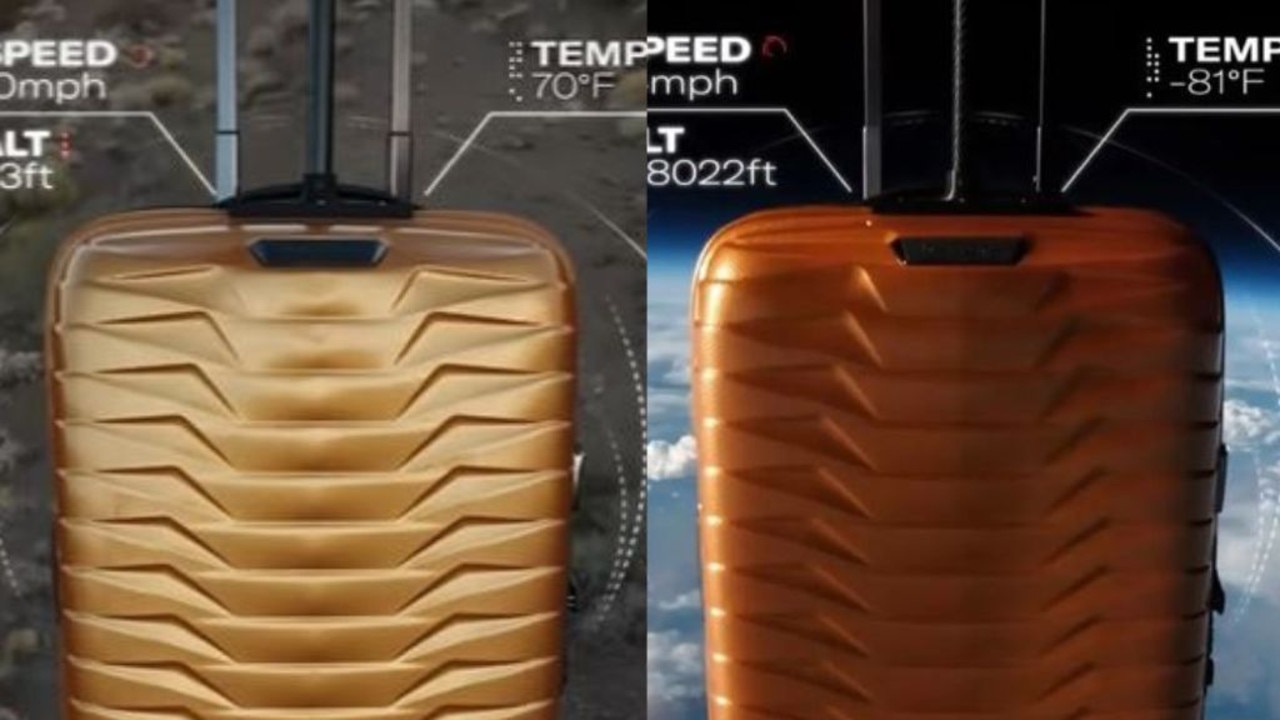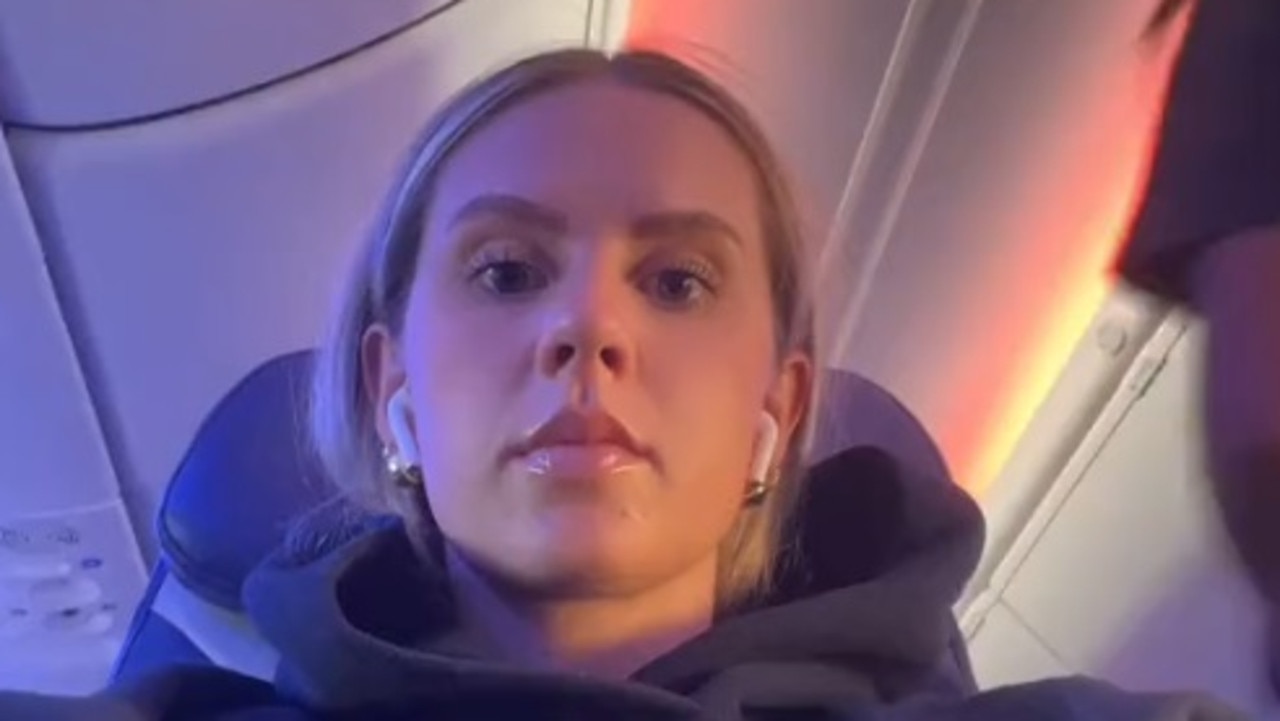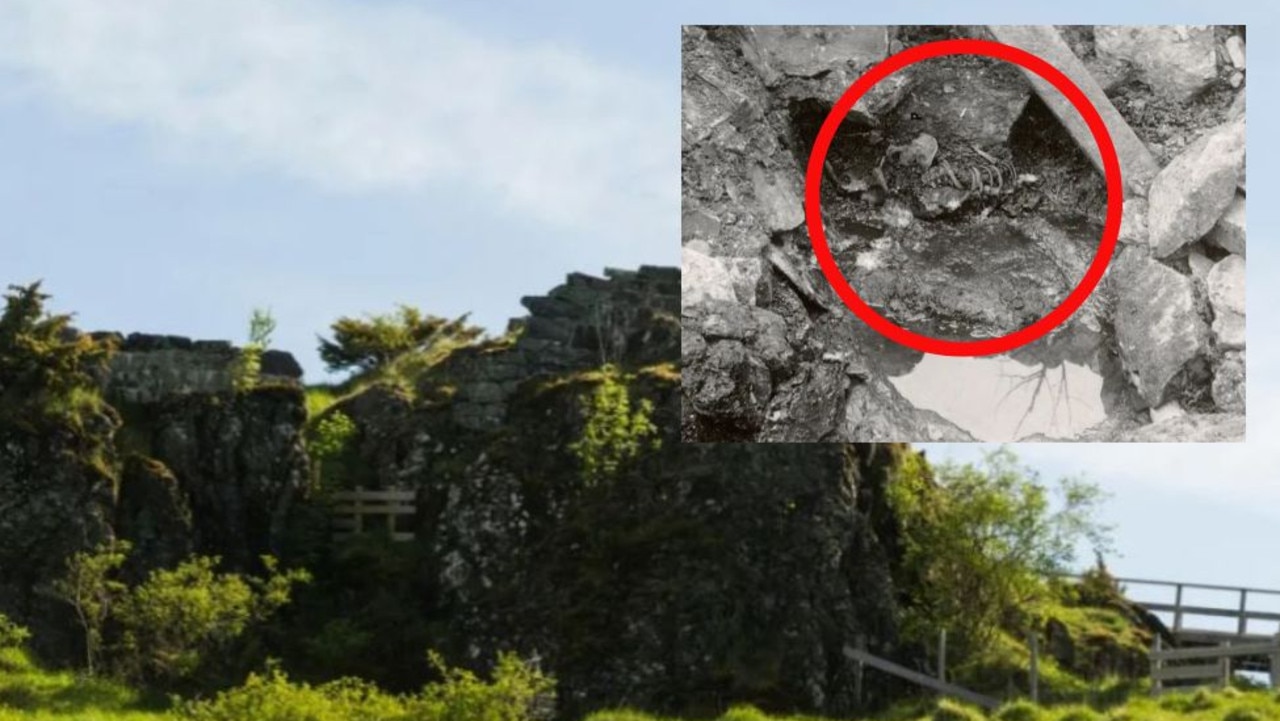These are some of the wackiest spots in Australia
AUSTRALIA really is a weird and wonderful place. And these are the most interesting, hidden gems most tourists miss.
A NEW travel book has uncovered the weird and wonderful spots around the world that tourists usually miss — and a lot of those places are right here at home.
Lonely Planet’s just-released book, Secret Marvels of the World, reveals eerie natural wonders, urban oddities and all kinds of bizarre things from all over the world.
Every state and territory in Australia has at least one curious attraction included in the book — and you might not even realise they existed.
“This book celebrates under-the-radar places, from the mysterious and the mesmerising to the downright bizarre,” Lonely Planet said.
“In a time when technology has given us a better understanding than ever before of the ‘hows’ and ‘whys’ of life, these places show us we don’t know the half of it.”
Here are some of the more unusual attractions from right around Australia Lonely Planet reckons all curious travellers should check out.
NEW SOUTH WALES
Giant Pink Slugs of Mount Kaputar
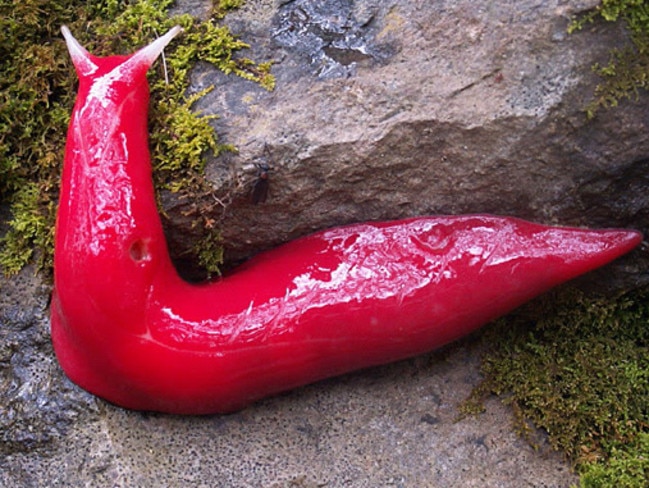
The small alpine forest at the peak of Mount Kaputar, near Narrabri in northern NSW, is home to a fascinating ecosystem, but nothing seems as amazing as its most famous residents — neon-pink slugs that can grow to a whopping length of 20 centimetres.
These slugs, related to the similar red triangle slug, can be seen on cool, wet mornings, climbing down snow gum trees after a night looking for algae and moss to eat.
They hide at the base of the trees during the day and at night they’re back up the trunks again, looking for food.
And with their bright, distinctive colour, they’re a real sight to behold.
Other NSW spots mentioned in the book: SS Ayrfield, Big Golden Guitar, Big Banana and the Big Merino.
WESTERN AUSTRALIA
Hutt River Principality

In case you didn’t know, there is a self-professed micro-nation that exists within Australia’s borders.
The Hutt River Principality is a 75 square kilometre, privately-owned wheat property north of Geraldton that claims to have seceded from Australia after a row over low wheat production quotas in 1970.
It’s never been recognised by the Australian government and it is still subject to state and Commonwealth laws, but the principality has its own postage stamps and currency.
Leonard Casley, who has reigned over Hutt River Principality since its foundation, announced his plans to abdicate his sovereignty earlier this year, passing his crown to his youngest son, Prince Graeme.
Other WA spots mentioned in the book: Cocos Islands Golf Club, Cape Leeuwin, Gnomesville, Gloucester Tree, Lake Ballard, Lake Hillier.
SOUTH AUSTRALIA
Whispering Wall
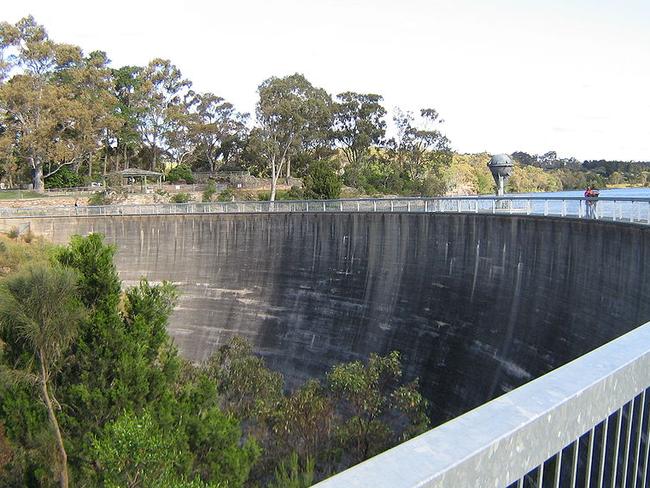
The Barossa Reservoir in South Australia’s famous wine region may not look like much, but it’s what you hear that makes this spot so interesting.
The acoustic effect that the curved dam walls create can make whispers on one side of the dam be clearly heard on the other side, 140 metres away — hence the name, the Whispering Wall.
It’s due to the Parabola Effect. The wall, being a perfect circle, allows sound to bounce in a series of straight jumps to the other end of the dam, Guide to SA explains.
The Whispering Wall was built between 1900 and 1903 and at nine storeys high, it was once the highest dam wall in Australia.
Other SA spots mentioned in the book: Coober Pedy’s Grassless Golf Course, the Big Rocking Horse, the Big Lobster.
NORTHERN TERRITORY
Devils Marbles
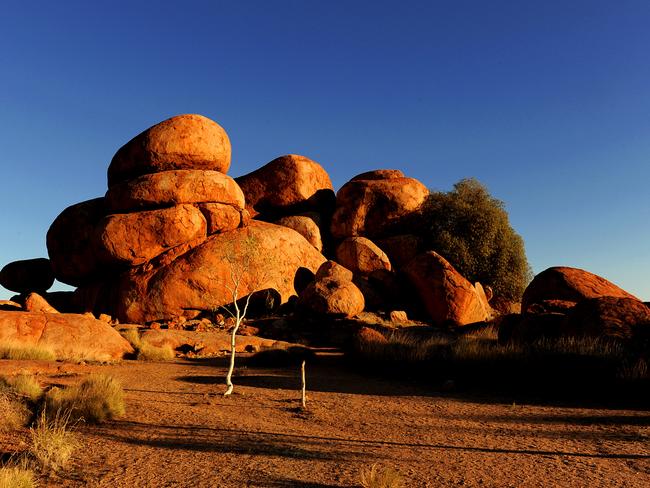
About 393km north of Alice Springs you’ll find giant rock formations peppered across the land.
These are known as the Devils Marbles, and they’re ancient granite boulders, formed over millions of years, ranging in size from 50 centimetres to a massive metres across.
Remarkably, some of the boulders sit precariously on top of others in a kind of gravity-defying display, and at sunrise and sunset, their colours appear to change, from pink to bright red — similar to Uluru.
The Devils Marbles are in the traditional country of the Warumungu, Kaytetye, Alyawarra and Warlpiri people, who call them “Karlu Karlu”.
While there are no official tours of the site, it’s a massive draw for tourists.
Another NT spot mentioned in the book: Henley on Todd Regatta, Alice Springs.
AUSTRALIAN CAPITAL TERRITORY
Futuro House, Canberra
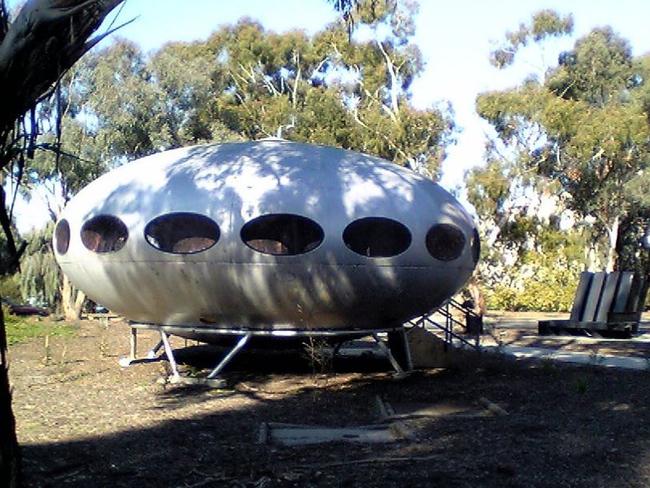
This futuristic, spaceship-like structure by Finnish architect Matti Suuronen looks like it could be a set piece from a bad space movie, but it is one of a number of portable houses people actually lived in fifty years ago.
Up to 100 of Suuronen’s fibreglass Futuro houses were built during the 1960s and 70s, at a time marked by huge technological developments and the space race. There were said to be about seven of these homes in Australia.
The Futuro House on display at the University of Canberra has been restored and renovated and is now an iconic part of the campus and a must-see for lovers of retro architecture.
VICTORIA
Cow Up a Tree Sculpture
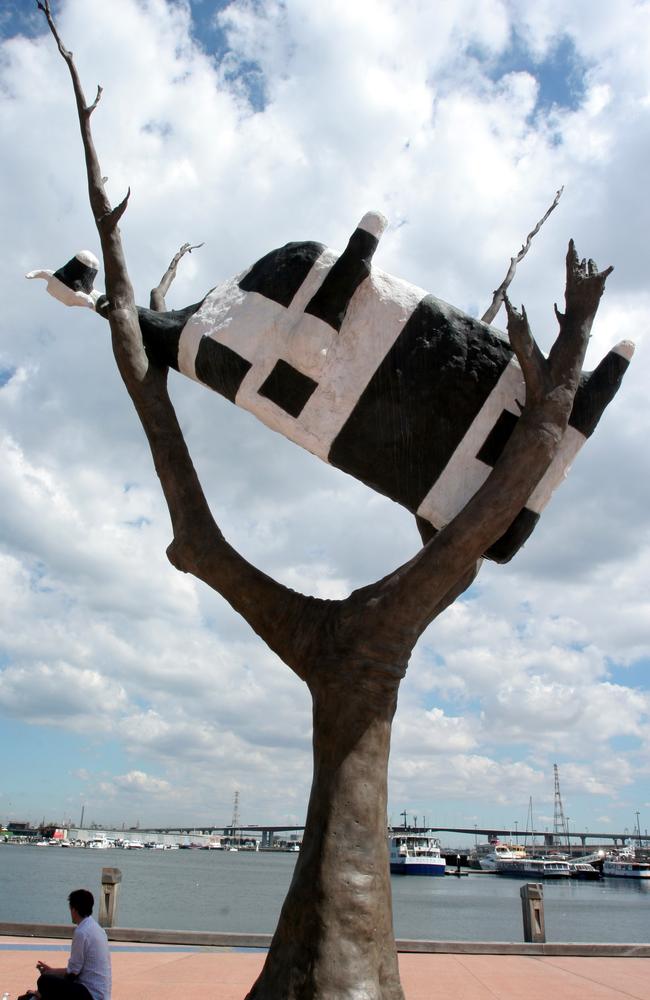
In Melbourne’s Docklands is a remarkable sight — a four-tonne, bronze structure of a cow stuck in the branches of a tree.
Australian artist John Kelly’s work was inspired by the Australian phenomenon of animals becoming trapped in trees during floods.
And his quirky creation has won fans from all over the world. The sculpture showcased in France, the UK, Ireland and the Netherlands before it was permanently installed in Melbourne, and is now owned by the City of Melbourne.
Other Victorian spots mentioned in the book: Solar System Trail, Big Pheasant, Big Ned Kelly, Giant Koala.
QUEENSLAND
Golden Gumboot
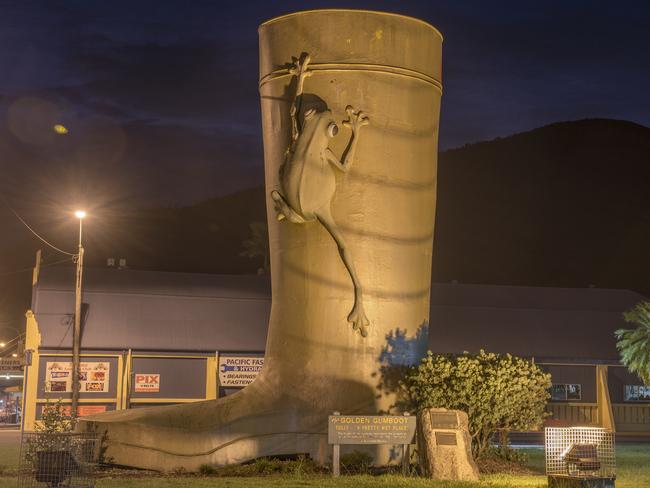
Queensland is home to many of Australia’s Big Things but one you may have not yet visited is the Golden Gumboot in the town of Tully in Far North Queensland.
Why is there a golden gumboot in town? Because of Tully’s incredibly high rainfall figures — it claims to be one of Australia’s wettest towns.
The Tully Lions and Rotary Clubs erected the iconic monument in 2003 at a cost of $90,000. The fibreglass monument is a massive 7.9 metre tall, which represents the record rainfall Tully experienced in 1950.
There’s a spiral staircase inside, and visitors can learn more about wet weather in Tully and the devastating floods experienced by the town.
Another QLD spot mentioned in the book: The Big Pineapple.
Lonely Planet’s Secret Marvels of the World is available in-store now.

